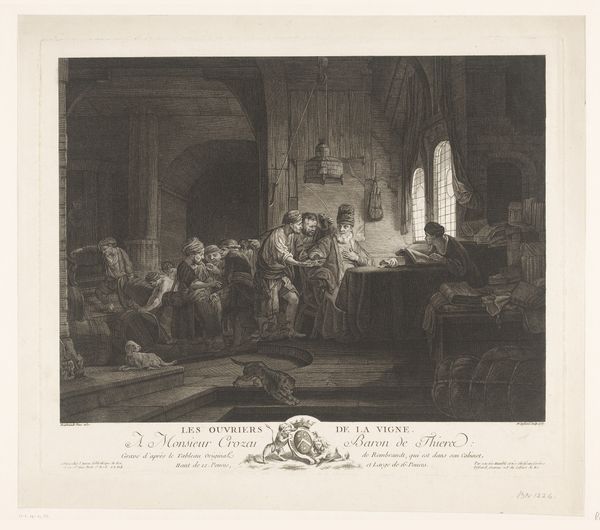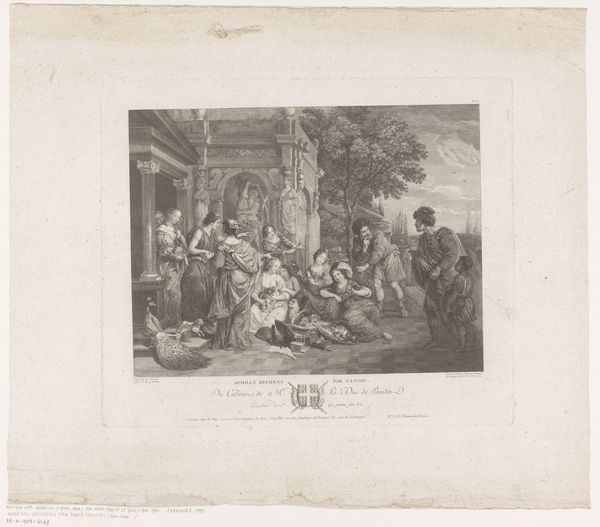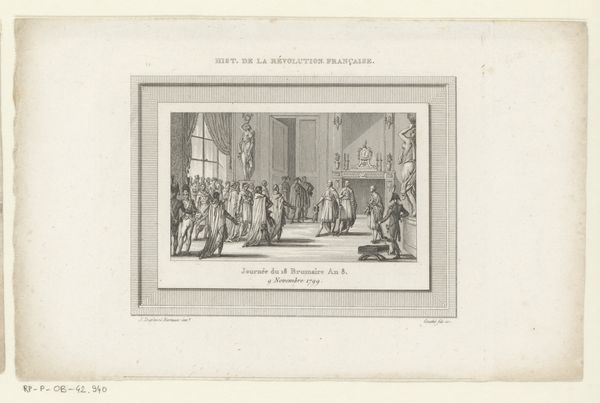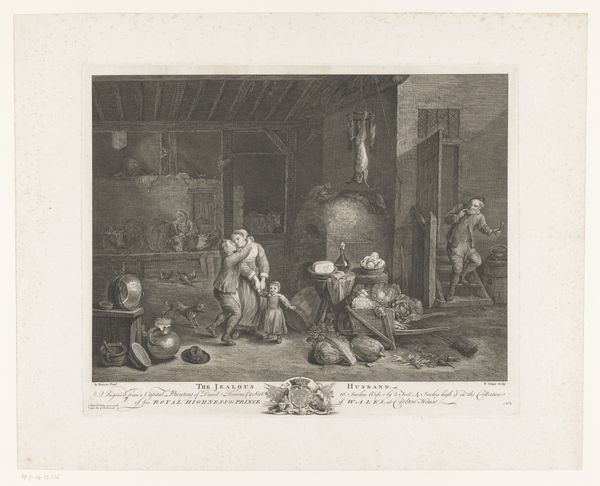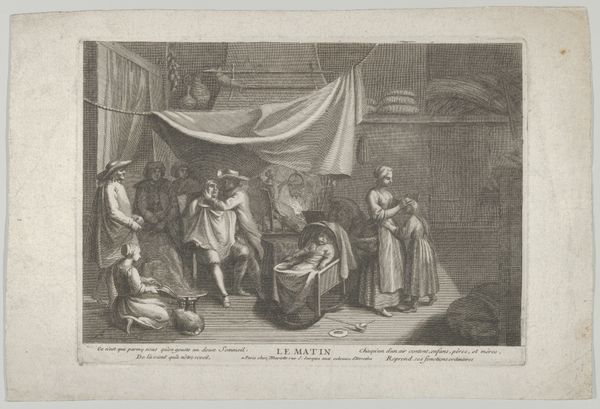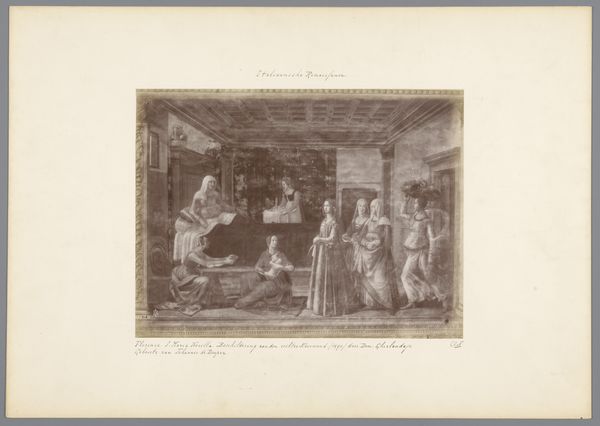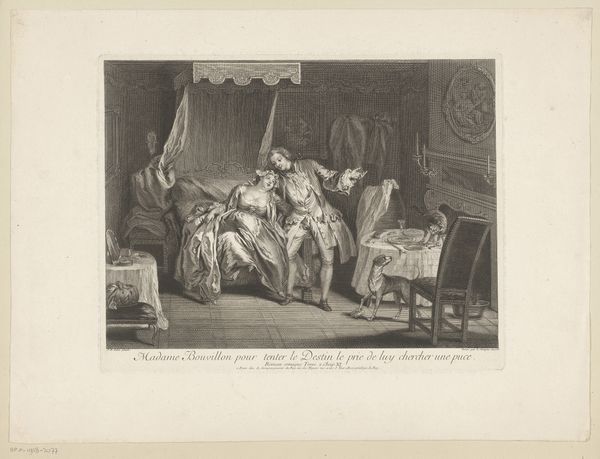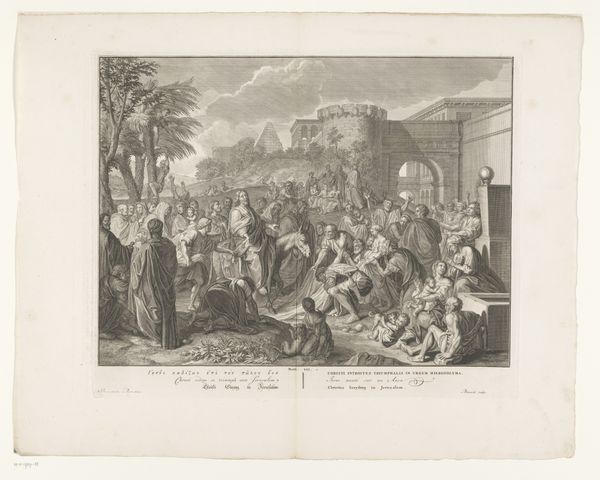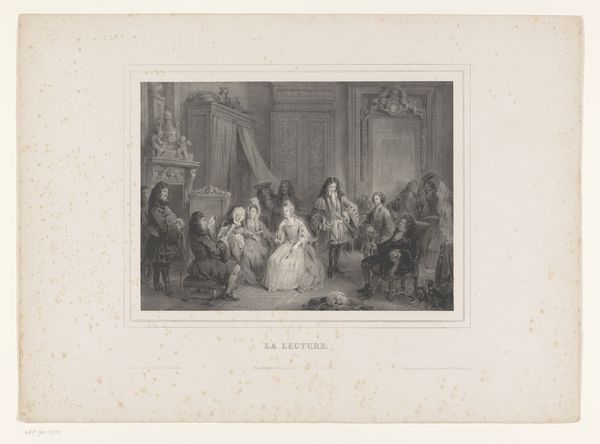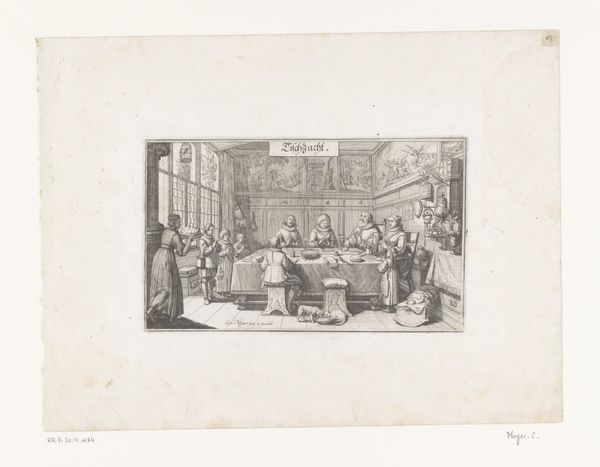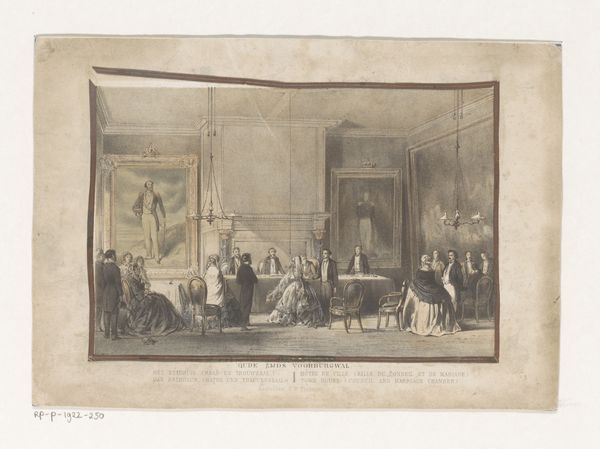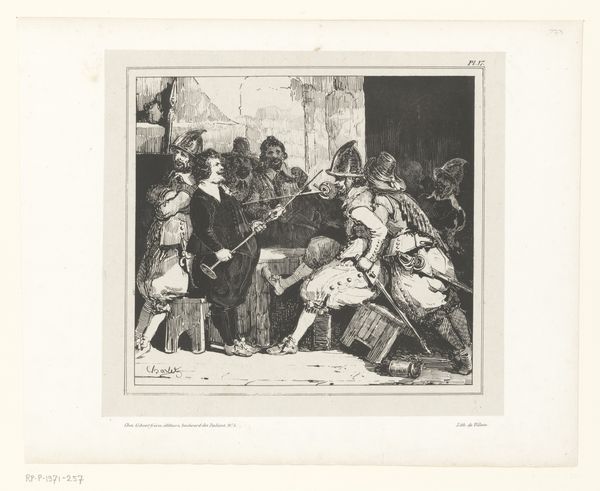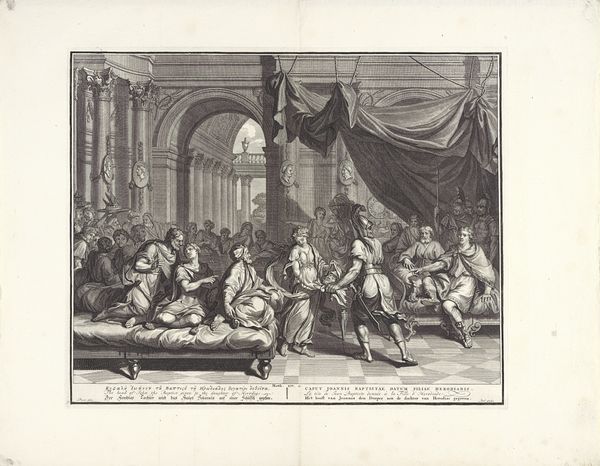
Dimensions: height 353 mm, width 435 mm
Copyright: Rijks Museum: Open Domain
Curator: Look at this print, "Interieur met figuren voor een rechter," created between 1770 and 1786 by Jean Jacques Le Veau. It’s currently housed at the Rijksmuseum. Quite a detailed depiction, isn't it? Editor: My first thought is how busy it is, but not chaotic. It's got a quiet hustle, like you've walked in on a specific moment in time and frozen it, an "engraving" if I can say so myself. What strikes you? Curator: The sheer range of social classes represented. You have figures surrounding what I imagine to be the magistrate that are beautifully adorned. Then, look over yonder and you can perceive those huddled together, presumably to make their claim. Editor: Yes, and consider that for whom did Jean Jacques Le Veau create this piece? An art patron who wants to see an engraving with a bit of narrative? Are they considering, through this image, their relationship to the ruling figures versus the ruled? Are they asking the same questions we're asking now? Curator: It makes me wonder about the intent—was it meant to critique or simply observe? It's like peeking through a window into a courtroom drama from centuries ago, a moment in time perfectly embalmed for the ages. It has an undeniably haunting aspect because of the dark undertones against all of the visible actions of the people. Editor: It's hard to miss the implied power dynamics, isn't it? The theatrical Baroque style highlights the performativity of justice. The individuals in the front command a gaze that reminds me that systems of authority were historically exclusionary, favoring specific bodies and voices over others, particularly when we view gender and race at the core. Curator: It's that very dance between the personal and the structural, a dance that’s still twirling in our present. Le Veau captured something perennial—the quiet desperation of people seeking justice within an imperfect system. Editor: Agreed, it pushes us to examine how representation itself can be a form of activism, quietly prompting reflections on agency, ethics, and our roles within existing structures. How complicit, and active, can we become in their reimagining? Curator: Thank you for unveiling those intricacies. Le Veau gives much to interpret here, from its meticulous composition to the figures themselves. Editor: Likewise. This isn't just a historical document; it's a challenge for us to really reflect upon what we consider "just" today.
Comments
No comments
Be the first to comment and join the conversation on the ultimate creative platform.
